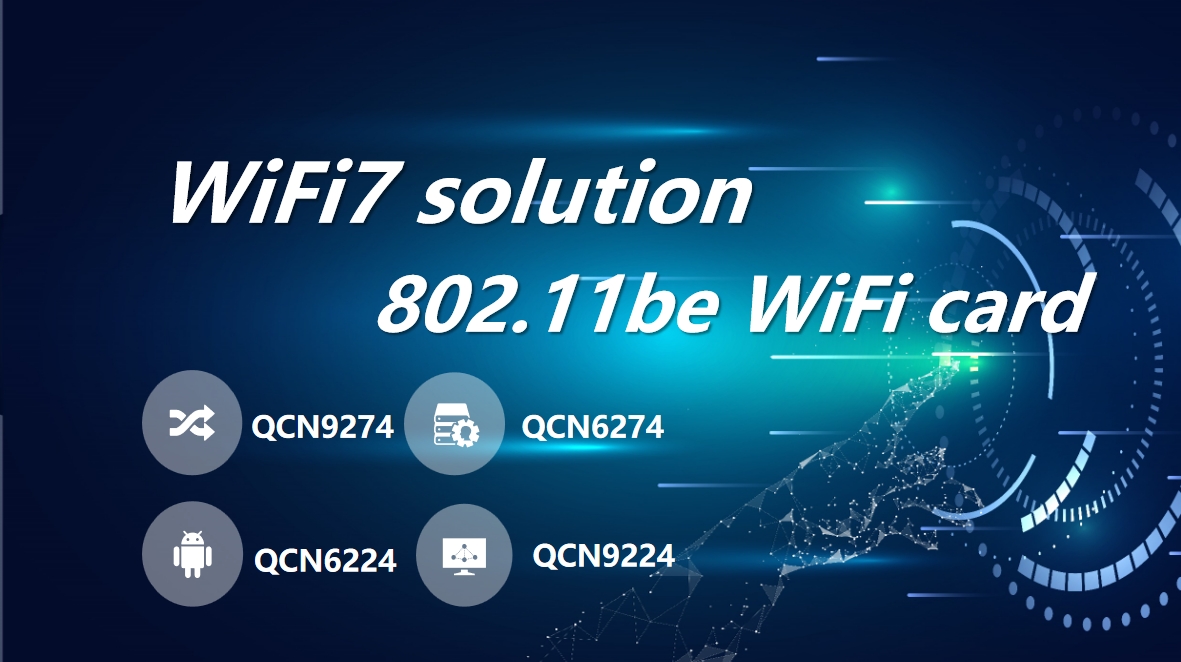QCN9274, QCN6274, QCN9224 and QCN6224-Do you know the specific requirements?
QCN9274, QCN6274, QCN9224 and QCN6224-Do you know the specific requirements?
The QCN9274, QCN6274, QCN9224, and QCN6224 are different models of Wi-Fi chips introduced by Qualcomm. They differ in terms of functionality and performance, and their advantages and differences are compared below.

1. QCN9274:
The QCN9274 is a high-performance Wi-Fi 7 (802.11be) chip with higher speeds and more capacity. It supports multi-user multiple-input multiple-output (MU-MIMO) technology and can communicate with multiple devices simultaneously, providing a more stable and efficient wireless connection. In addition, QCN9274 also supports OFDMA technology, which can divide wireless channels into multiple sub-channels to improve the capacity and efficiency of the network.
The QCN9274 has higher speed and greater capacity than other chips, making it suitable for scenarios where large amounts of data need to be processed and multiple devices connected, such as high-density public Spaces or corporate networks.
- Frequency band: QCN9274: Support 802.11be standard 2.4 GHz and 5 GHz, 6Ghz band, many WiFi solution design and production suppliers, are constantly studying the performance of WiFi7, design and production of different specifications of WiFi7 products. For example, the WiFi7 card that supports single frequency can also support dual frequency, support 2.4G&5G, support 5G&6G, and adapt to the needs of different markets.
The following three chips are also the main chips of WiFi7 card, which can be designed according to the market demand of different versions of WiFi7 to meet the different project needs of customers.
2. QCN6274:
The QCN6274 is a high-performance Wi-Fi 7 (802.11be) chip with high speed and large capacity. It supports MU-MIMO technology and can communicate with multiple devices simultaneously, providing a more stable and efficient wireless connection. In addition, the QCN6274 supports Beamforming technology, which optimizes the transmission of wireless signals based on the location and signal quality of the device, improving coverage and speed.
The QCN6274 has higher speed and larger capacity than other chips, making it suitable for scenarios where large amounts of data need to be processed and multiple devices connected, such as home networks or small offices.
- Frequency band: QCN6274: supports 2.4 GHz and 5 GHz bands, including 2.4 GHz and 5 GHz bands under the 802.11be standard.
3. QCN9224:
The QCN9224 is a low-power Wi-Fi 7 (802.11be) chip with high speed and large capacity. It uses Qualcomm's low-power technology to reduce power consumption and extend battery life while maintaining high performance. In addition, the QCN9224 supports Target Wake Time (TWT) technology, which can negotiate communication times with devices to further reduce power consumption.
- Difference: The QCN9224 has lower power consumption and higher speed compared to other chips, making it suitable for devices that require prolonged use and high battery life requirements, such as smartphones, tablets or iot devices.
- Frequency band: QCN9224: supports 2.4 GHz and 5 GHz bands, including 2.4 GHz and 5 GHz bands under the 802.11be standard.
4. QCN6224:
The QCN6224 is a low-power Wi-Fi 7 (802.11be) chip with high speed and large capacity. It uses Qualcomm's low-power technology to reduce power consumption and extend battery life while maintaining high performance. In addition, the QCN6224 supports Beamforming technology, which optimizes the transmission of wireless signals based on the location and signal quality of the device, improving coverage and speed.
The difference: The QCN6224 has lower power consumption and higher speed compared to other chips, making it suitable for devices that require prolonged use and high battery life requirements, such as smartphones, tablets or iot devices.
- Frequency band: QCN6224: supports 2.4 GHz and 5 GHz bands, including 2.4 GHz and 5 GHz bands under the 802.11be standard.
To sum up, the QCN9274, QCN6274, QCN9224 and QCN6224 are different models of Wi-Fi chips introduced by Qualcomm, and they differ in terms of features and performance. The choice of the appropriate chip depends on the specific application scenario and requirements, such as speed, capacity, power consumption, etc.
本文来自互联网用户投稿,该文观点仅代表作者本人,不代表本站立场。本站仅提供信息存储空间服务,不拥有所有权,不承担相关法律责任。 如若内容造成侵权/违法违规/事实不符,请联系我的编程经验分享网邮箱:veading@qq.com进行投诉反馈,一经查实,立即删除!